Empire of Style
IMAGES
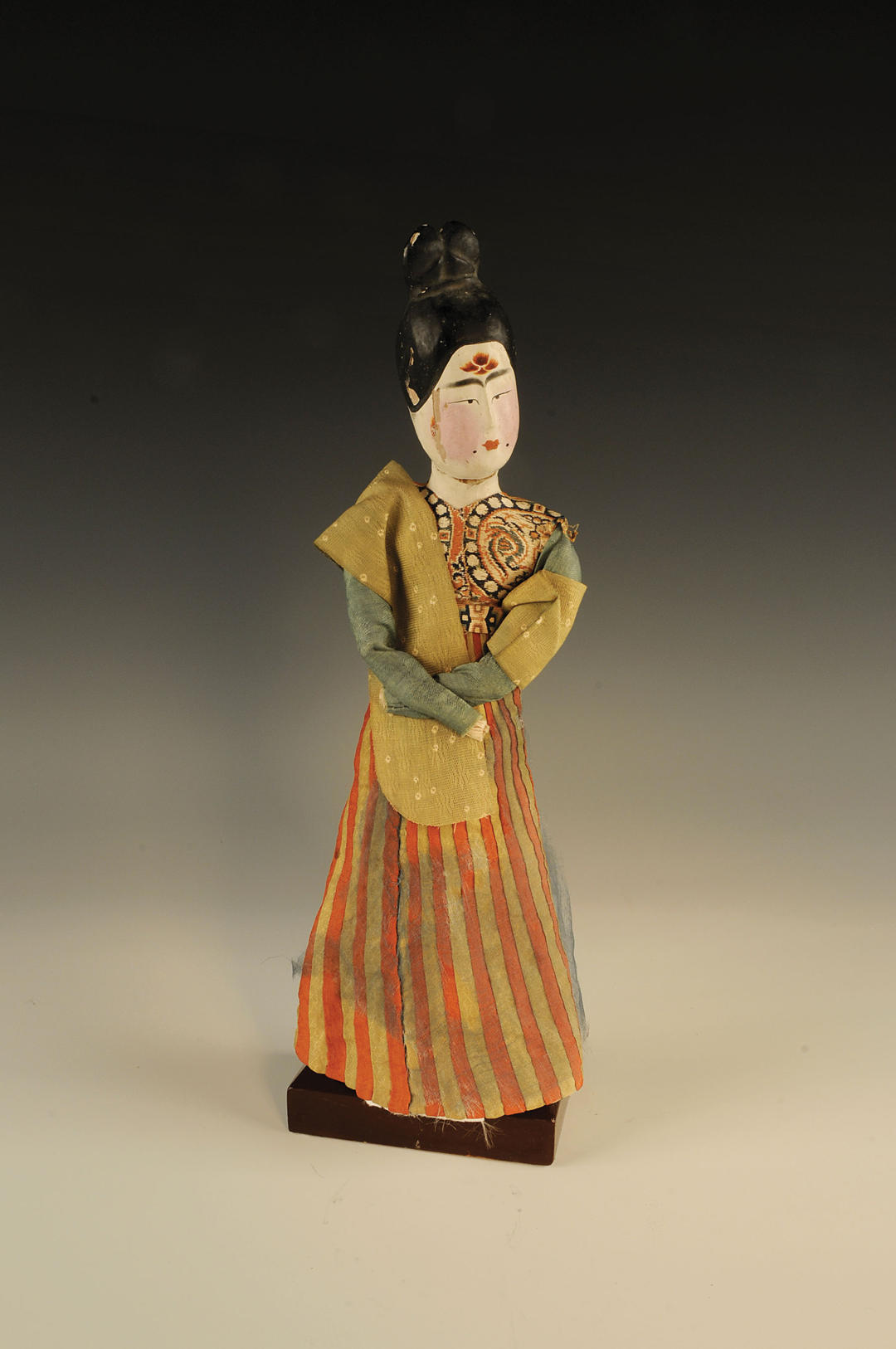
Female dancer. The body is composed of a wooden frame with paper padding, the head is modeled clay and pigments, and the garments are composed of jin (a compound patterned weave; the term was used generally to refer to a wide range of polychrome fabrics in imperial China), tapestry, and resist-dyed silks. H. 29.5 cm. Excavated in 1973 from the tomb of Zhang Xiong and Lady Qu (dated 688), Astana, Turfan. Courtesy of Xinjiang Uyghur Autonomous Region Museum.
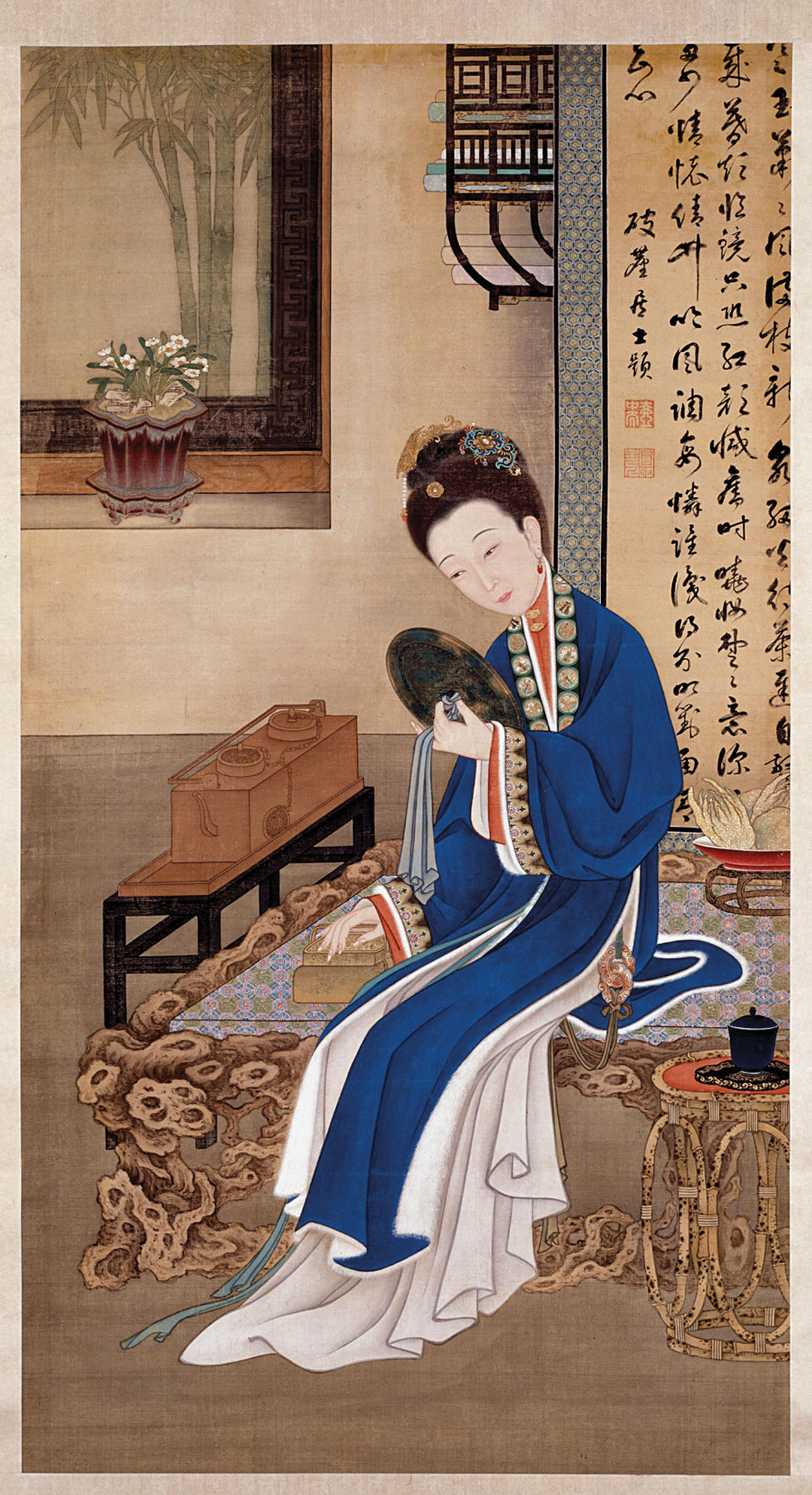
Unidentified court artists, Qing dynasty, eighteenth century. Twelve Beauties at Leisure Painted for Prince Yinzhen (the future Emperor Yongzheng), one of a set of twelve. The paintings of twelve beauties, each dressed in Han Chinese women’s attire, decorated a screen in the prince’s study at the Summer Palace (Yuanmingyuan). Each woman wears a high-collar, short robe, and long skirt underneath an overgarment (pifeng). With the exception of the skirt, the silk garments are differentiated by color, pattern, and decorative trim. Hanging scroll, ink and color on silk; H. 184 cm, W. 98 cm. Photo provided by the Palace Museum, Beijing.
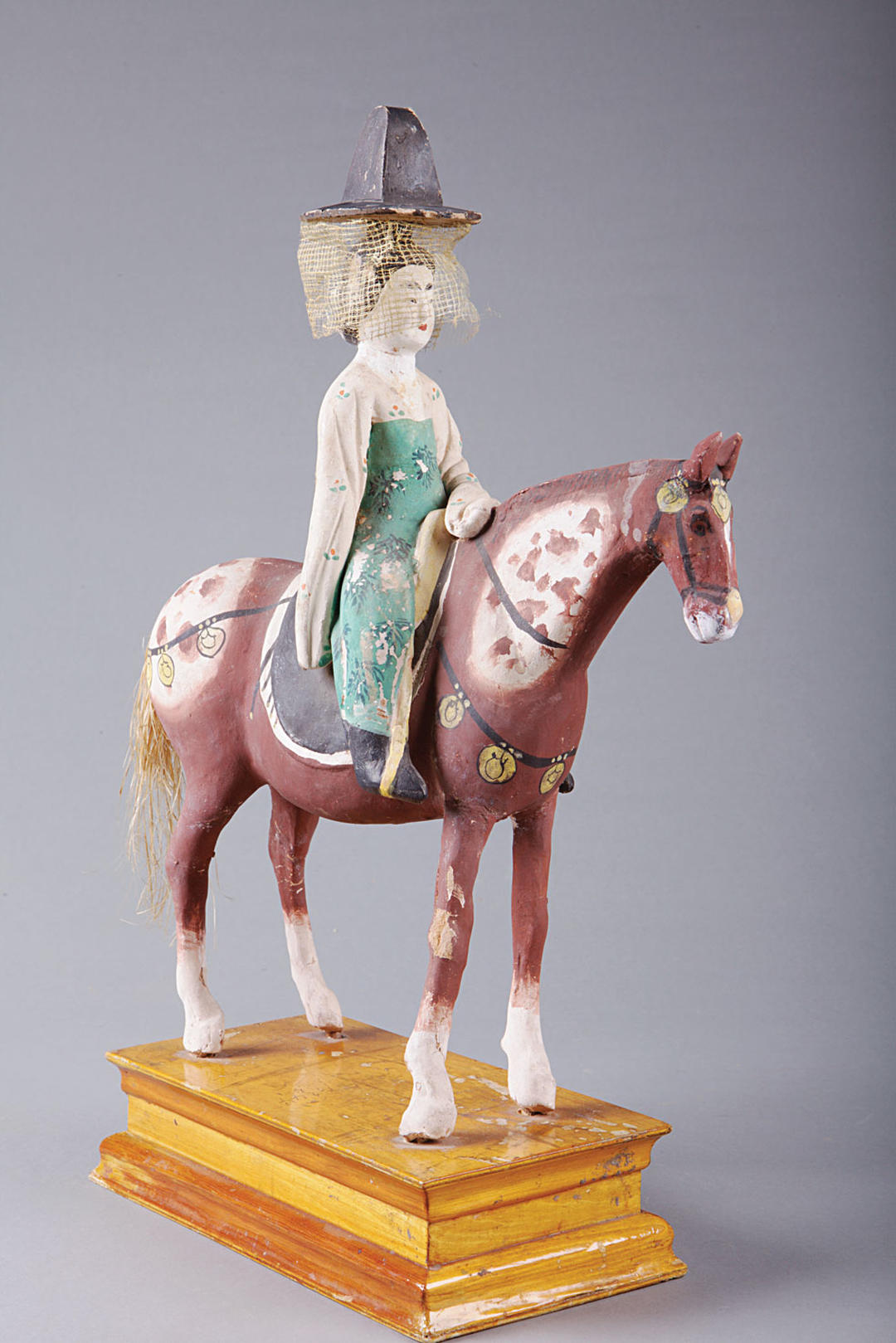
Female rider and horse. The figure wears a weimao, a wide-brimmed hat with an attached veil. Modeled clay figure with pigments, silk, and linen; H. 39 cm. Tomb 187, Astana, Turfan, eighth century. Courtesy of Xinjiang Uyghur Autonomous Region Museum.

Traditionally attributed to Zhou Fang (ca. 730–800), Court Ladies Pinning Their Hair with Flowers. Each of the five palace women are presented as variants of the central theme: woman as a flower. Handscroll, ink and colors on silk; H. 46 cm, L. 180 cm. Courtesy of Liaoning Provincial Museum.
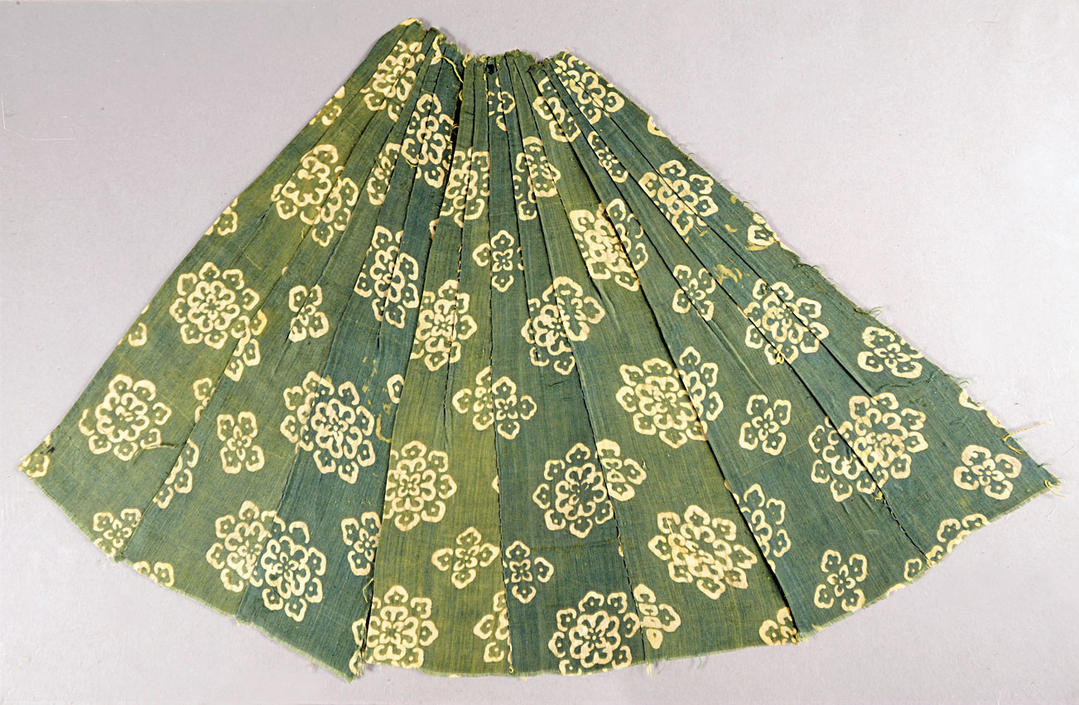
Printed, plain-weave silk (juan) skirt. Composite flower and persimmon calyx patterns printed on green ground; L. 25 cm, W. 41 cm (hem). Tomb 187, Astana, Turfan, eighth century. Courtesy of Xinjiang Uyghur Autonomous Region Museum.
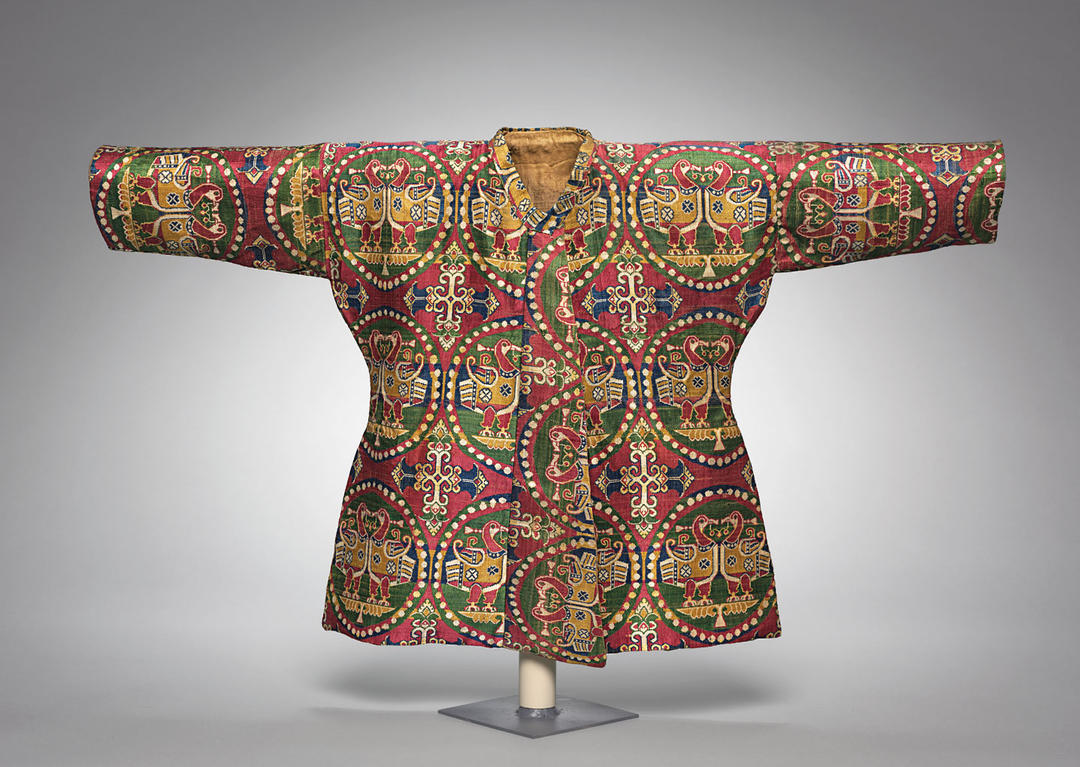
Child’s Coat with Ducks in Pearl Medallions, eighth century. Probably Uzbekistan. Samite (weft-faced compound twill): silk. Lining: Twill damask (ling): silk; L. 48, W. 82.5 cm. The Cleveland Museum of Art, purchase from the J. H. Wade Fund 1996.2.1.
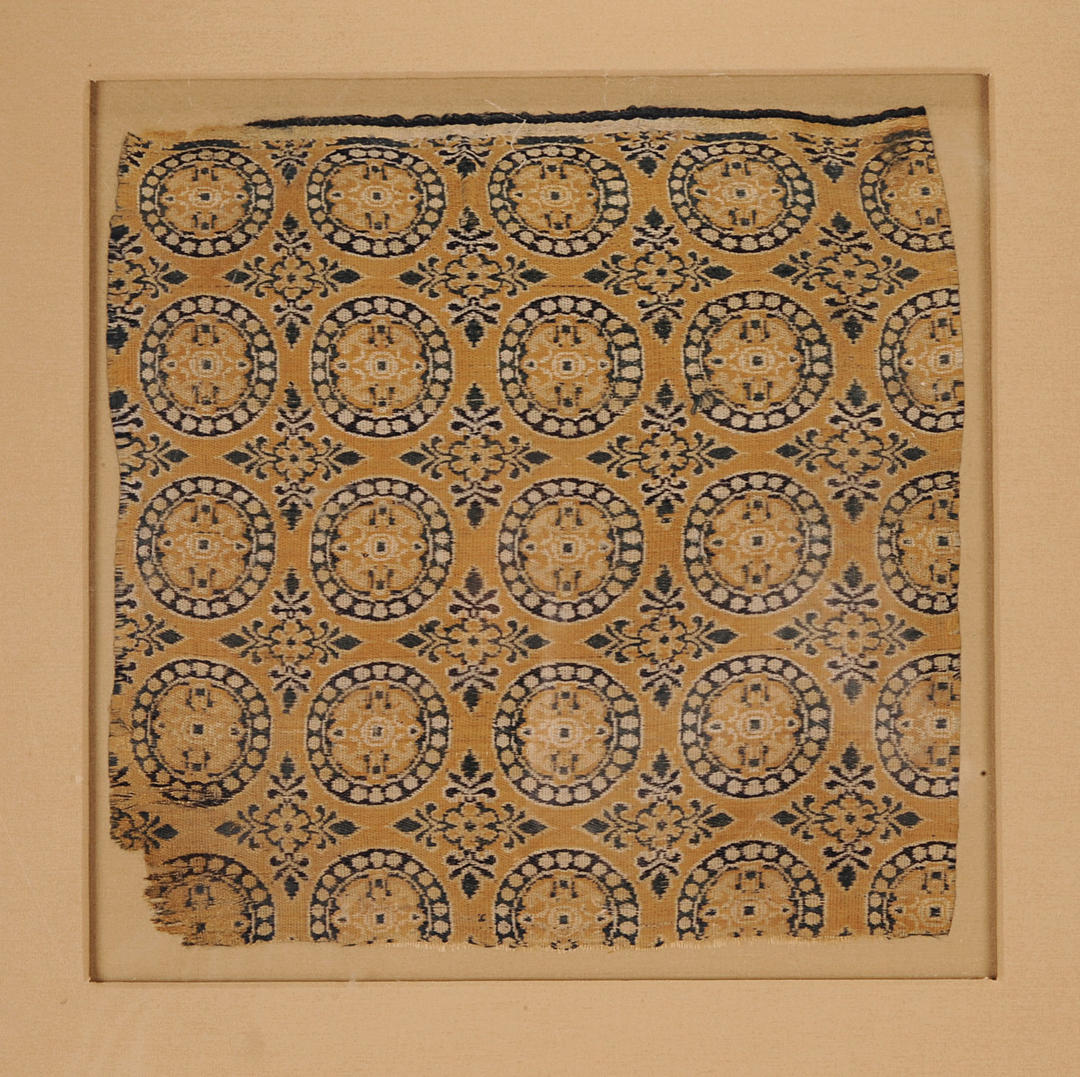
Treasure-flower medallion (baoxiang huawen) with quatrefoils, eighth or ninth century. Weft-faced compound twill; H. 61 cm, W. 71.1 cm. Purchase, Joseph Pulitzer Bequest, 1996. The Metropolitan Museum of Art, New York.